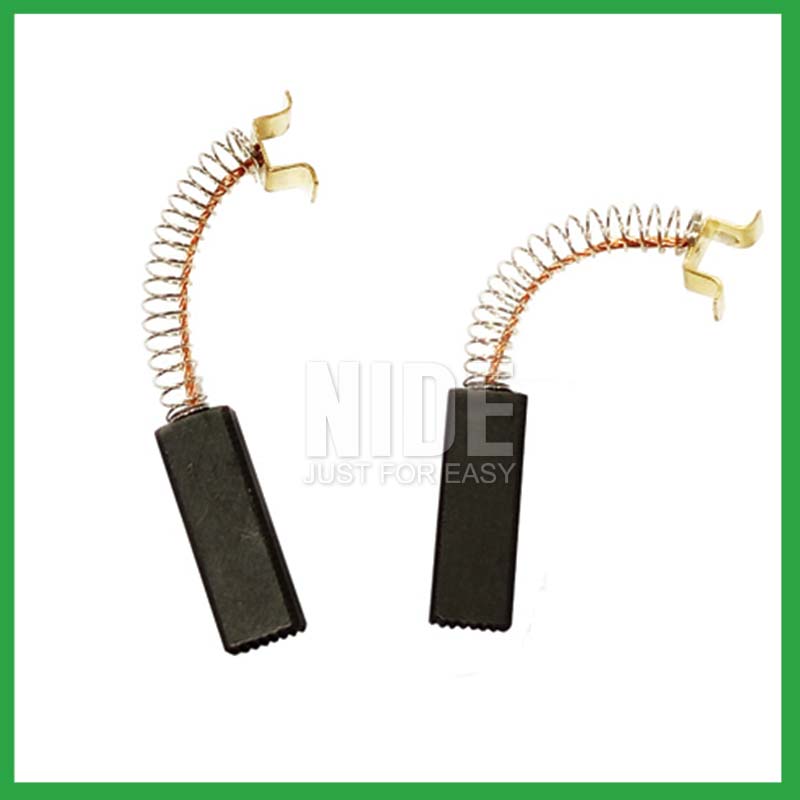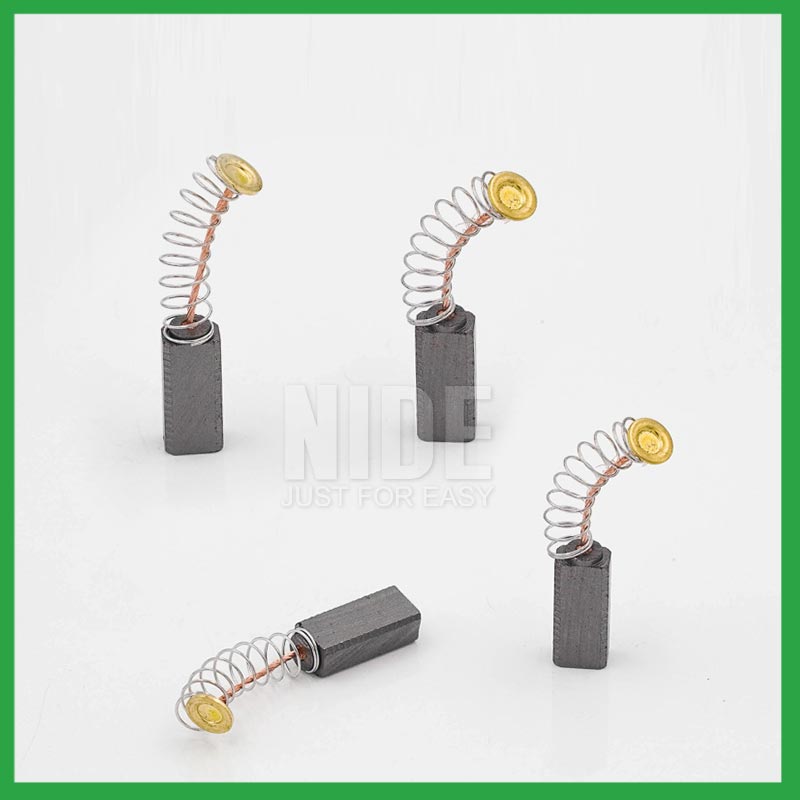2024-10-14
Carbon brushes are a critical component in many electric motors and generators, responsible for conducting electrical current between the rotating part (the rotor or armature) and the stationary part (the stator) of the machine. At Nide International, we specialize in producing high-quality carbon brushes, such as our Nide Carbon Brush NBX Series, designed to provide optimal performance and longevity. Despite their reliability, carbon brushes can encounter issues over time, especially in demanding applications. Understanding common problems and how to troubleshoot them can help prevent machine failures and ensure smooth operations. In this article, we’ll explore some of the most frequent carbon brush issues and offer practical troubleshooting tips to keep your equipment running efficiently.

One of the most common issues with carbon brushes is excessive wear, which leads to reduced electrical contact and performance degradation. Carbon brushes naturally wear down over time due to friction with the commutator or slip rings. However, accelerated wear can occur due to improper material selection, excessive current, or mechanical misalignment.
Symptoms:
Troubleshooting:
Arcing or sparking at the brush-commutator interface is another frequent issue, often resulting from poor electrical contact or improper brush alignment. Arcing can lead to damage to the brush, commutator, or slip rings, ultimately causing machine failure.
Symptoms:
Troubleshooting:
Pitting or burning on the carbon brush surface is usually caused by high temperatures, excessive electrical load, or poor contact between the brush and commutator. This issue can lead to reduced performance and damage to both the brushes and the motor.
Symptoms:
Troubleshooting:
Brushes can sometimes become chipped or broken, often due to mechanical stress, misalignment, or improper installation. Chipped brushes can result in poor contact with the commutator and lead to premature failure.
Symptoms:
Troubleshooting:

Carbon brushes are an essential component in electric motors and generators, but they can face several issues, including excessive wear, arcing, pitting, and breakage. By understanding the root causes of these problems and implementing effective troubleshooting measures, you can significantly extend the lifespan of your carbon brushes and ensure optimal performance of your equipment. At Nide International, we provide a wide range of high-quality carbon brushes, such as our Nide NBX Series, designed for reliability in even the most demanding environments.
When faced with carbon brush issues, it’s crucial to conduct regular maintenance and inspections, ensuring that brushes are correctly aligned, properly lubricated, and within their wear limits. By doing so, you can minimize downtime, reduce operational costs, and maximize the efficiency of your electric motors and generators.
Q: How often should I replace carbon brushes in a motor?
A: The replacement frequency depends on the application and operating conditions. However, it's recommended to replace carbon brushes when they are worn down to 30% of their original length to ensure reliable performance and prevent damage to the motor.
Q: What causes carbon brushes to wear out quickly?
A: Quick wear can result from factors such as excessive current loads, improper brush material selection, poor ventilation, or a rough commutator. To reduce wear, ensure that your motor is operating within its specified parameters, and use brushes designed for high-load applications, such as the NBX 5000 Series from Nide International.
Q: Can I clean carbon brushes, and how should I do it?
A: Carbon brushes themselves do not require cleaning, but you should clean the commutator or slip rings regularly to remove dust and debris. Use a soft cloth and isopropyl alcohol to clean the contact surfaces without damaging them.
Q: What are the signs that carbon brushes are failing?
A: Common signs of failing carbon brushes include visible sparking, erratic motor performance, reduced torque, overheating, or unusual noises coming from the motor. If you notice any of these signs, inspect the brushes for wear or damage and replace them if necessary.